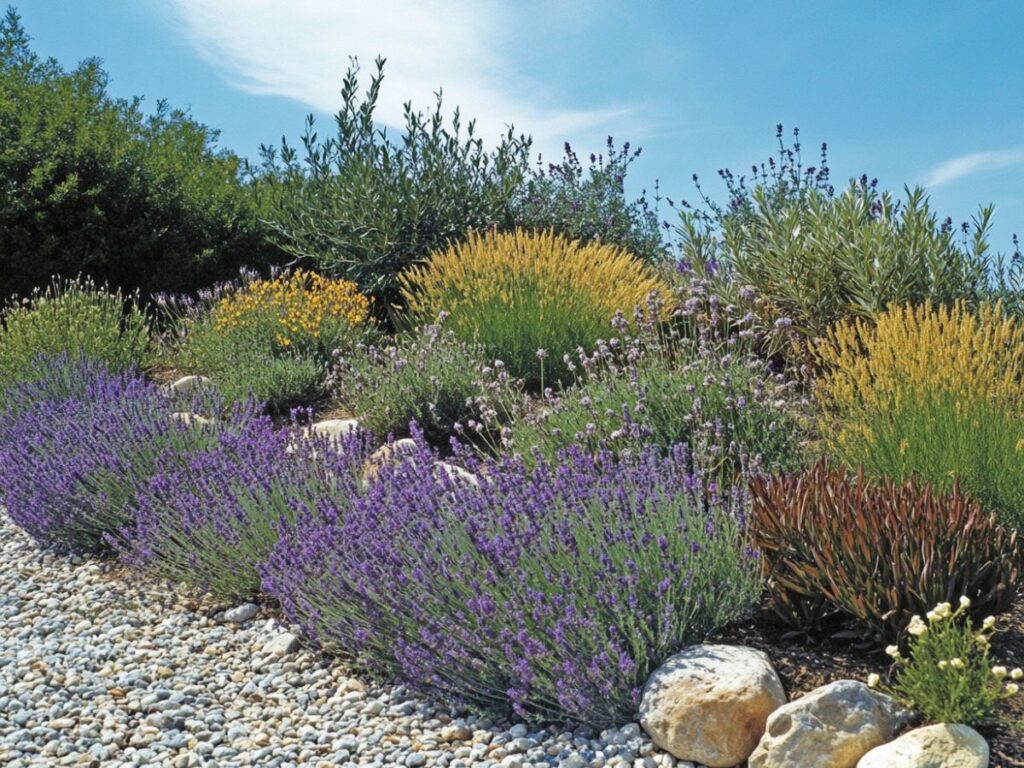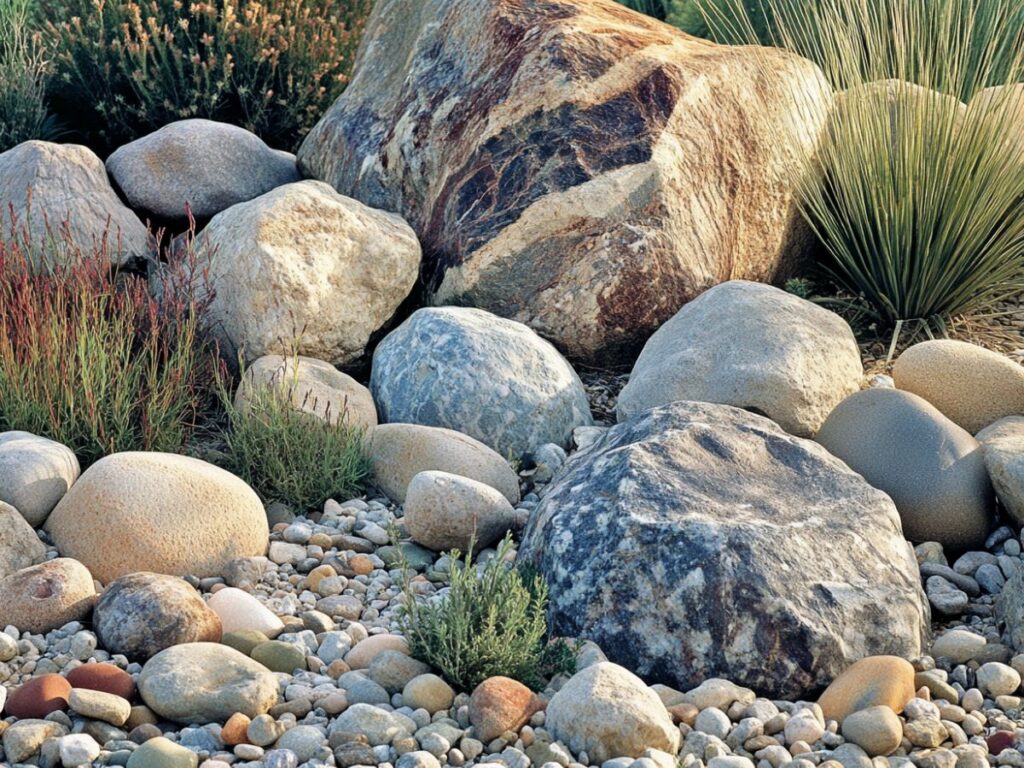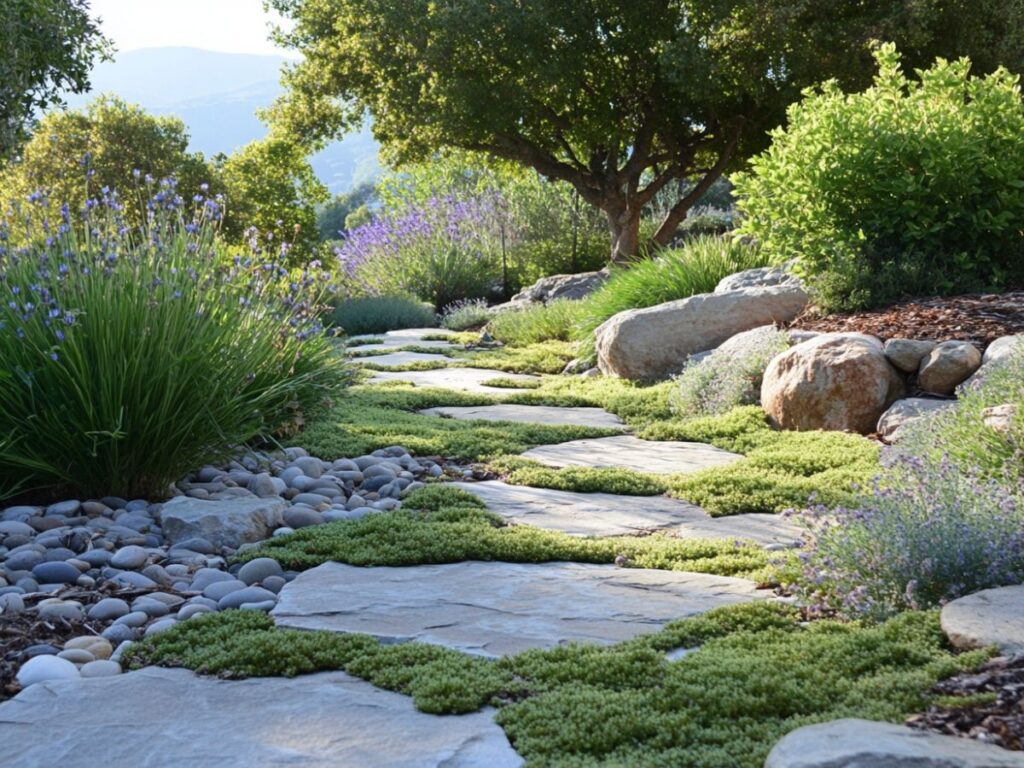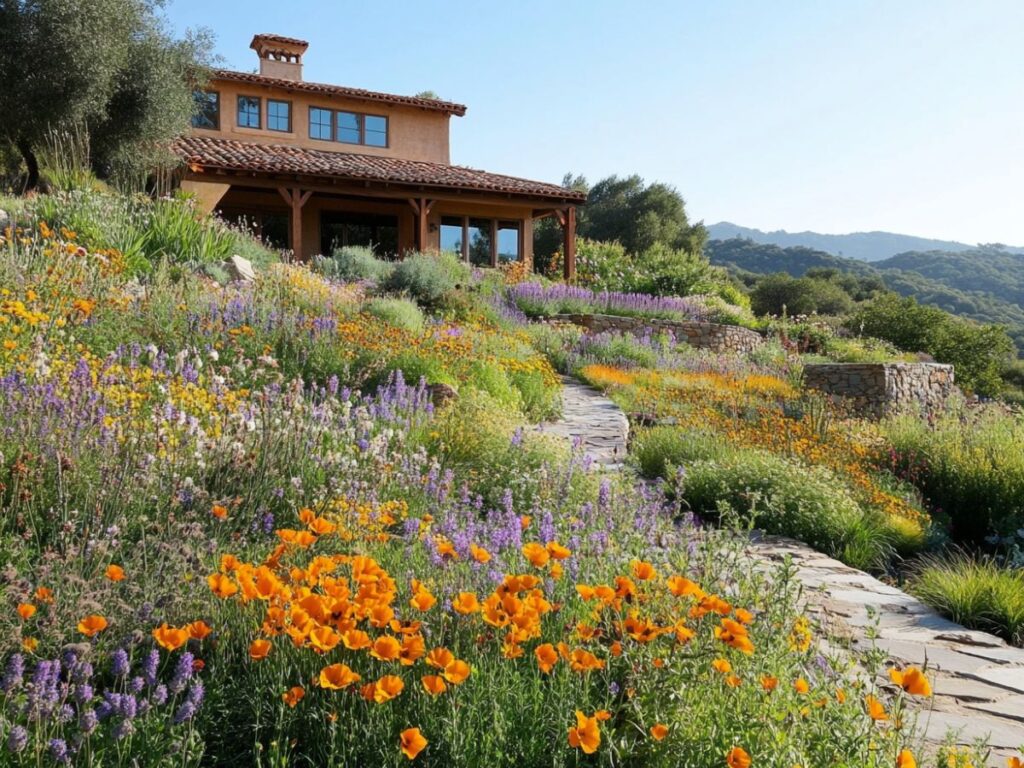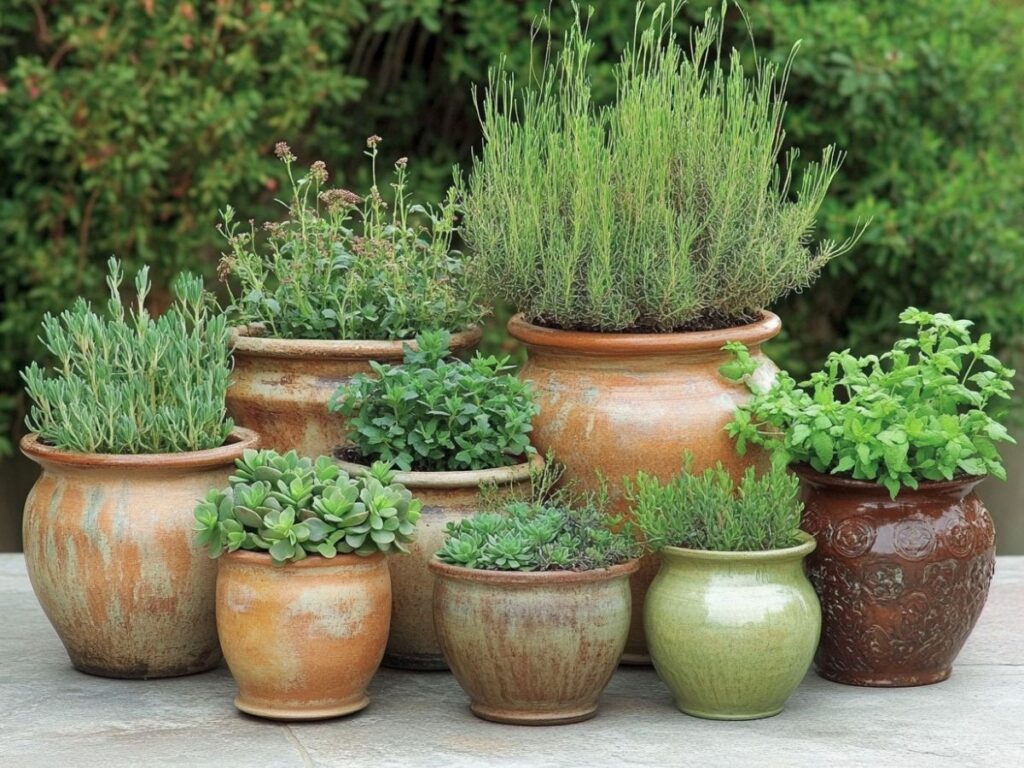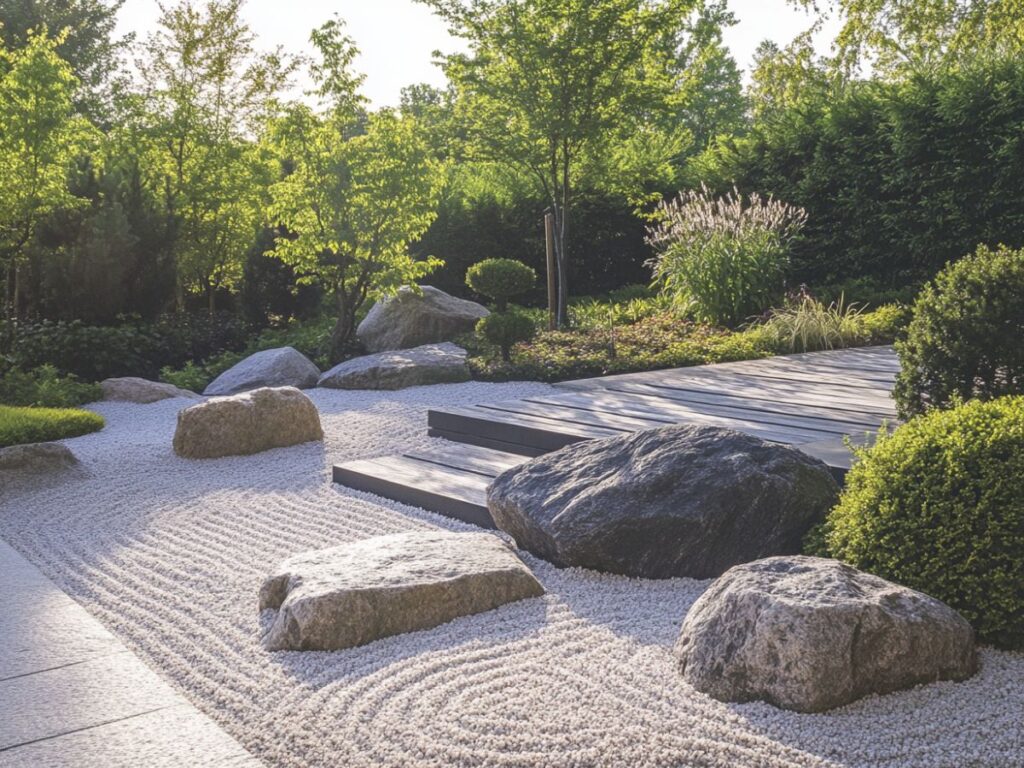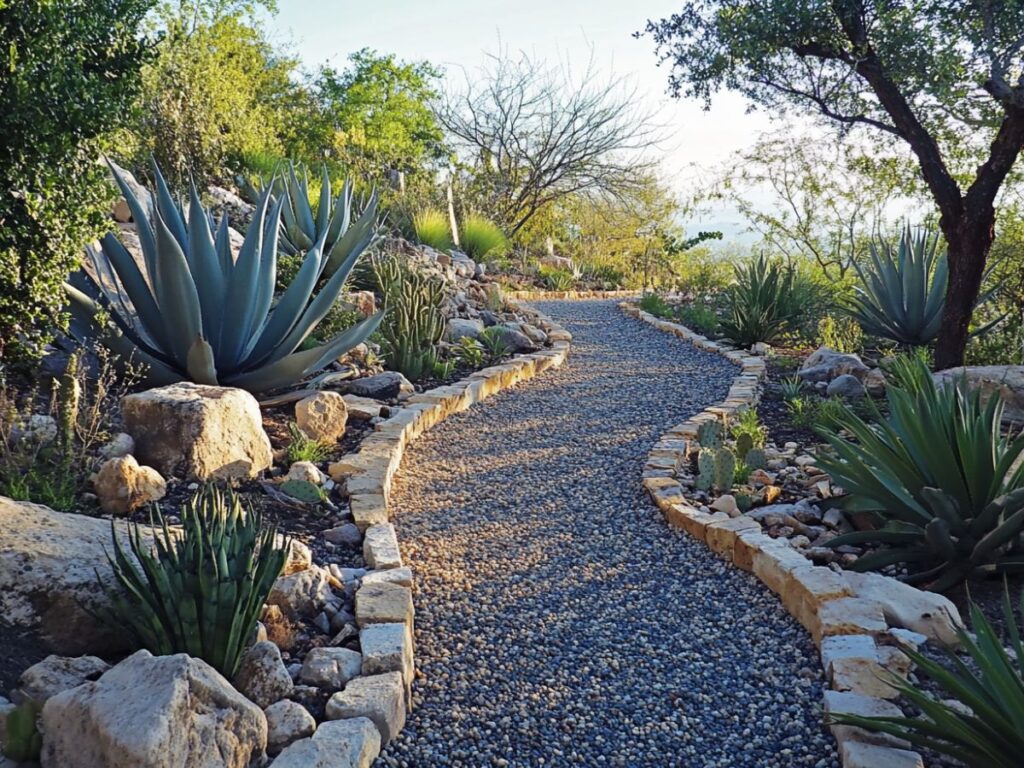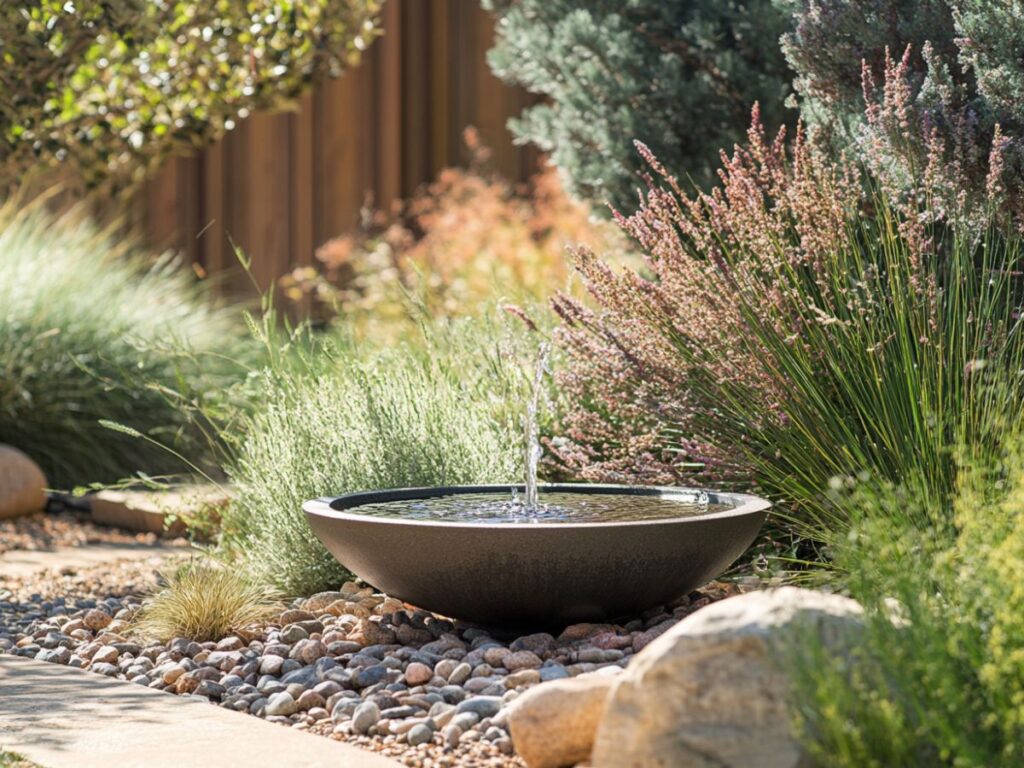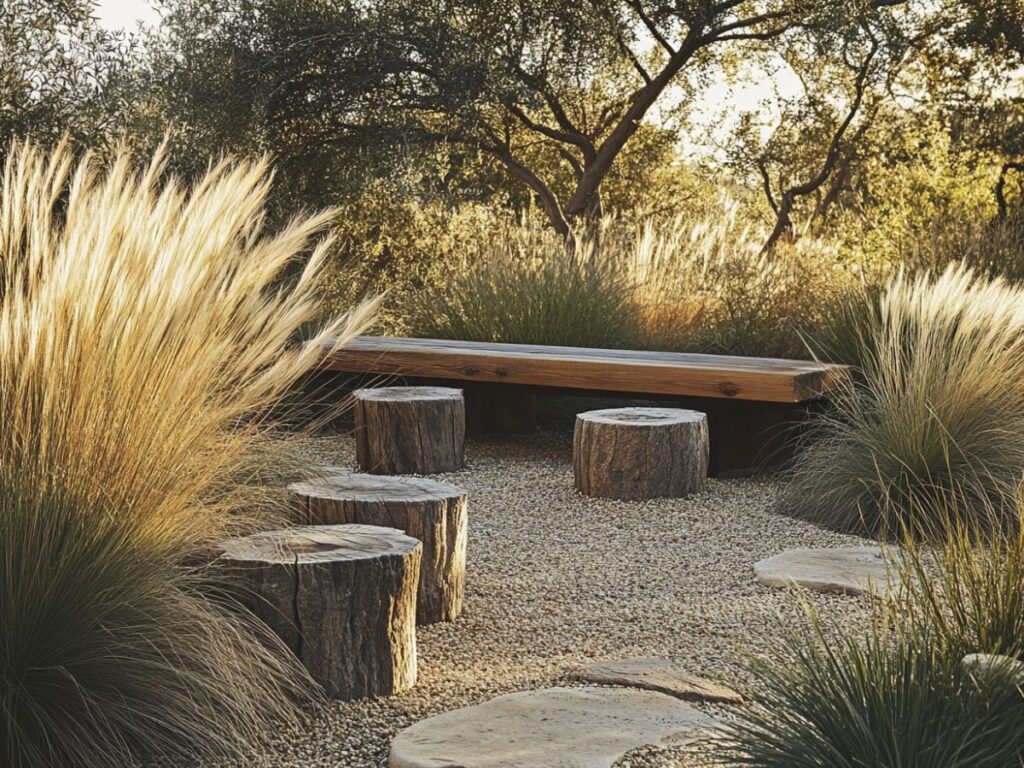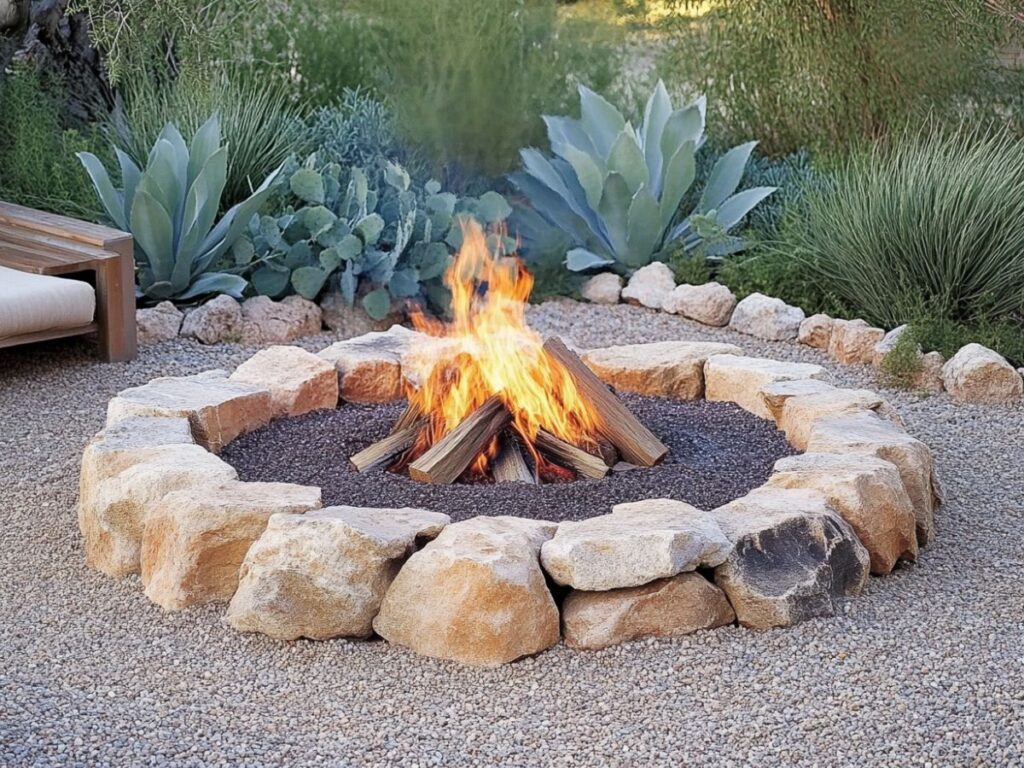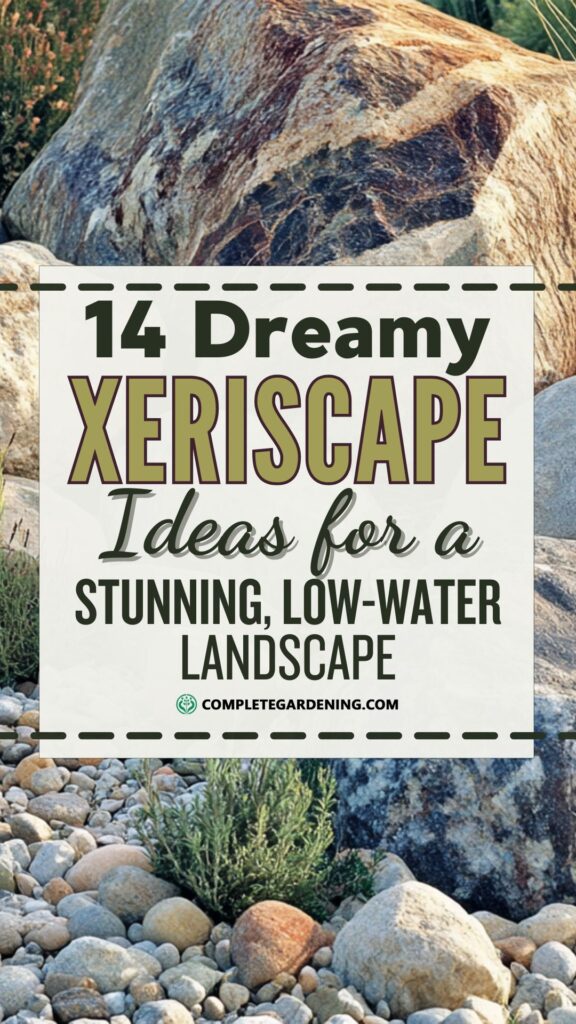If you’ve been dreaming about a lush, beautiful landscape but live in a drought-prone area, xeriscaping might be your new best friend.
In recent years, xeriscaping has surged in popularity as more people look to create beautiful outdoor spaces that are as sustainable as they are eye-catching.
Xeriscaping, or low-water landscaping, is ideal for those living in drought-prone areas or for anyone who wants to save water and cut back on garden maintenance without sacrificing style.
By embracing a xeriscape, you can design an enchanting landscape that flourishes with less water, less fuss, and tons of charm.
Let’s dive into 14 dreamy xeriscape ideas that promise to bring your outdoor oasis to life.
1. Native Plant Paradise
The first step in xeriscaping is choosing plants that thrive in your climate without needing much water.
Native plants are already adapted to your region’s weather, soil, and water conditions, making them a low-maintenance choice.
Try drought-resistant plants like lavender, sage, and ornamental grasses if you’re in a hot, dry area. You’ll save on watering and enjoy a landscape that feels naturally at home.
2. Desert-Inspired Cacti and Succulent Garden
Cacti and succulents are xeriscape superstars! With their unique shapes, colors, and textures, they bring a desert vibe that’s both stylish and hardy.
Choose varieties like agave, aloe, and barrel cactus for visual appeal. Group different shapes and sizes together in beds, raised planters, or along pathways for a dynamic look. Add gravel mulch to complete the desert-inspired feel.
3. Stunning Rock Garden
Rock gardens are xeriscaping essentials. Use stones, pebbles, and boulders to add visual interest, define spaces, and reduce water needs. Arrange rocks in layers or clusters to create focal points.
You can mix different sizes and types of stones to mimic natural landscapes. Not only will this cut down on watering, but it will also create a visually striking and textured environment.
4. Creative Ground Cover Alternatives
Replace thirsty grass with ground cover plants that thrive on minimal water. Options like creeping thyme, blue fescue, or even moss (for cooler climates) spread easily and add softness to your garden.
These ground covers create a lush, green look without the high water needs of a traditional lawn, making them perfect for a xeriscape.
5. Mulch Magic
Mulch is a xeriscaper’s secret weapon. It helps retain moisture, keeps roots cool, and prevents weeds. Organic mulches like bark chips or pine needles break down over time, adding nutrients to the soil.
Inorganic options like gravel, crushed stone, or decomposed granite work beautifully too and add a modern, minimalist touch. Mulch not only conserves water but also adds a polished look to your garden.
6. Dry River Beds
For a feature that’s both functional and decorative, consider a dry river bed. Use smooth stones and gravel to mimic the look of a natural stream.
This design element adds movement and depth to your garden, especially when used as a winding path between plantings. A dry river bed channels water during rain, prevents erosion, and creates a visually captivating centerpiece.
7. Colorful Wildflower Meadow
Yes, you can still enjoy color in a xeriscape! Planting a wildflower meadow with native, drought-resistant flowers is a stunning way to add life and vibrancy to your yard.
Look for varieties like poppies, coneflowers, and lupines, which bring a burst of color and attract pollinators like bees and butterflies. It’s a beautiful, eco-friendly option that brings a soft, natural look to your space.
8. Potted Plant Collection
Don’t have the space for a full garden? Opt for a xeriscape-inspired container garden instead.
Choose pots in different shapes, sizes, and colors to create visual interest, and fill them with drought-tolerant plants like succulents, herbs, and small ornamental grasses.
Arrange your pots in groups, or place them strategically around patios and pathways to add pops of green without committing to in-ground planting.
9. Minimalist Zen Garden
Bring tranquility to your outdoor area with a Japanese-inspired Zen garden. This design focuses on simplicity, using gravel, sand, rocks, and sparse plantings.
Rake patterns into the sand or gravel to create a sense of flow, and add a few drought-resistant plants like juniper or dwarf pine for a touch of greenery. The Zen garden is an ideal low-maintenance option that evokes a sense of calm and balance.
10. Pathways of Gravel and Stone
Define your garden areas with walkable pathways made of gravel or stone. This not only reduces water-thirsty grass but also guides visitors through your garden, creating a cohesive look.
Choose different textures and colors of stone to add character. You can line pathways with drought-tolerant plants or border them with rocks for a finished, polished appearance.
11. Breathtaking Water Feature
Who says xeriscaping can’t include water? Small, recirculating fountains or water bowls add a soothing, luxurious feel to your garden without wasting water.
Choose a fountain that allows water to recycle, keeping usage low. The sound of trickling water is not only relaxing but also attracts birds and wildlife, adding to the natural appeal of your space.
12. Pergolas and Shade Structures
Shade structures like pergolas, arbors, or simple sail shades are functional and attractive additions to any xeriscape. These structures reduce the sun’s intensity on plants, cutting down water requirements and providing a cool space to relax in.
Add climbing plants like bougainvillea or wisteria for a splash of color that also benefits from the partial shade.
13. Outdoor Seating with a Rustic Touch
For a space to unwind, consider a seating area with rustic materials that blend with the xeriscape. Wooden benches, stone stools, or wrought iron chairs are all great choices.
Surround the seating area with drought-tolerant plants, ornamental grasses, or decorative rocks to create a cozy, inviting atmosphere without the need for water-intensive grass or hedges.
14. Fire Pit Focal Point
If you’re looking to extend your outdoor enjoyment into the evening, a fire pit makes for an excellent xeriscape feature. Surround it with gravel or flagstone to minimize vegetation and avoid water needs.
The warmth and ambiance of a fire pit make it an ideal gathering spot, adding both function and style. Pair it with comfy seating to create a cozy oasis.
Xeriscaping is more than just a trend; it’s a sustainable approach to creating beautiful outdoor spaces with minimal water use.
Each of these ideas has its charm and purpose, and the best part is that they can be mixed and matched to fit your space and aesthetic.
You don’t have to live in the desert to enjoy the benefits of xeriscaping—anyone can create a low-water landscape that’s as functional as it is beautiful.

